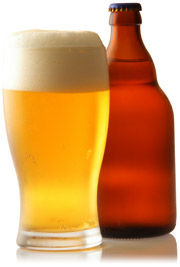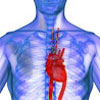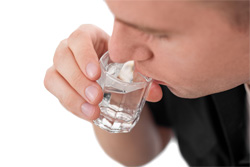- The long-term health consequences of alcohol consumption
- Health outcomes related to alcohol consumption
- Alcohol and the liver
- Alcohol and the circulatory system
- Alcohol, the brain and the nervous system
- Alcohol and cancer
- Alcohol and psychiatric disorders
- Alcohol and the pancreas
- Alcohol and pregnancy
- Responsible drinking
The long term health consequences of alcohol consumption
 |
For more information on the immediate effects of alcohol consumption, see Alcohol Consumption: The Short-Term Health Consequences.
|
Health outcomes related to alcohol consumption
- Alcoholic liver disease (ALD) (Liver disease which is directly caused by excessive alcohol consumption);
- Alcohol-induced pancreatitis (Pancreatitis which is alcohol-induced);
- Alcoholic polyneuropathy (Damage to nerves as a result of alcohol consumption);
- Alcoholic myopathy (Deterioration of muscles as a result of alcohol consumption);
- Alcoholic cardiomyopathy (Heart disease and heart failure as a result of alcohol consumption);
- Alcoholic gastritis (Inflammation of the lining of the stomach as a result of excessive alcohol consumption);
- Foetus and newborn affected by maternal use of alcohol; and
- Foetal alcohol syndrome.
- Ischaemic heart disease;
- Cardiomyopathy;
- Heart failure;
- Stroke;
- Diabetes;
- Alzheimer’s disease and other dementias;
- Depression;
- Oesophageal varices (mostly due to liver cirrhosis);
- Gall bladder and bile duct disease;
- Abortion;
- Preterm birth complications;
- Cancers:
- Mouth;
- Pharynx;
- Larynx;
- Oesophagus;
- Breast;
- Colorectum; and
- Liver.
Alcohol and the liver
 Excessive alcohol consumption can have serious and potentially fatal effects on the liver and is one of the leading causes of liver damage. In 2007 676 people in Australia died of ALD. This figure accounts for 14% of deaths due to diseases of the digestive system – the highest proportion of deaths in the category.Damage to the liver as a result of alcohol is categorised as ALD which describes a range of liver conditions such as:
Excessive alcohol consumption can have serious and potentially fatal effects on the liver and is one of the leading causes of liver damage. In 2007 676 people in Australia died of ALD. This figure accounts for 14% of deaths due to diseases of the digestive system – the highest proportion of deaths in the category.Damage to the liver as a result of alcohol is categorised as ALD which describes a range of liver conditions such as:- Alcoholic fatty liver;
- Alcoholic hepatitis;
- Alcoholic fibrosis and sclerosis of liver;
- Alcoholic cirrhosis of liver;
- Alcoholic hepatic failure; and
- Other unspecified alcoholic liver disease.
- The amount and duration of alcohol consumption: the longer the person has been drinking and the more they drink the more likely they will be to contract ALD;
- Gender: females are more susceptible to ALD than males and females diagnosed with liver cirrhosis have a shorter life expectancy;
- Malnutrition: poor diet in combination with excess alcohol has an increased risk severity for ALD;
- Viral infection: Hepatitis A, B and C will lead to increased liver injury;
- Genetics: genetics play a part in ALD – some people may drink excessively for years and never contract the disease whereas others who are diagnosed with ALD can drink far less;
- Medications: taking some medication in combination with excessive alcohol consumption may increase the likelihood of ALD.
Treatment
Abstinence from alcohol is the primary treatment for ALD. Other options for treatment and prevention include:
- Maintaining an optimum diet;
- Vaccination for Hepatitis A and B; and
- Carrying out safe practices to avoid infection by Hepatitis C.
Alcohol and the circulatory system
- High blood pressure;
- Damage to heart muscle;
- Increased risk of heart attack; and
- Increased risk of stroke.
Stroke
Many studies over the past two decades have investigated the relationship between alcohol use and stroke. Findings consistently show that heavy alcohol consumption is associated with an increased risk of total stroke, ischaemic stroke and haemorrhagic stroke. It is proposed that this increased risk is caused by a number of alcohol-induced effects on the circulatory system such as hypertension, coagulation disorders (disorders that affect blood clotting), atrial fibrillation and reductions in cerebral blood flow (blood flow of the brain).Alcohol has been also been associated with a 2.3 times higher risk of stroke 1 hour after alcohol consumption compared to periods of no alcohol consumption.
 |
For more information on the circulatory system, see Cardiovascular System (Heart).
|
Alcohol, the brain and the nervous system
- Diet;
- Alcohol consumption;
- Duration of drinking;
- Age at commencement of drinking and how long the person has been drinking;
- Gender;
- Level of education;
- Family history of alcoholism including prenatal alcohol exposure (an unborn baby being exposed to alcohol consumed by the mother);
- Genetics; and
- Health status.
Alcohol-related brain atrophy (wasting)

Vulnerability of brain regions
The frontal lobe is vulnerable to brain cell damage caused by alcohol. As a result, deficits in frontal lobe functions such as executive control, relationships and emotions and other tasks may be impaired.
The right hemisphere of the brain is also thought to be vulnerable to the effects of alcohol. This is why some alcoholics show very little emotion and have problems with spatial cognition (understanding where you are in your surroundings).
Neurotransmitter systems
Alcohol has been found to interfere with neurotransmitter functionality (functions of brain chemicals). This can lead to seizures, sedation, depression and agitation.9
Wernicke-Korsakoff syndrome
Wernicke-Korsakoff syndrome is a serious brain disorder that can be a result of low thiamine levels.Symptoms of the disease include:
- Confusion;
- Paralysis of eye muscles;
- Impaired muscle coordination;
- Learning and memory problems; and
- Difficulty processing new information.
Treatment
The best treatment for alcohol-induced brain injury is abstinence from alcohol. After one year of abstinence some improvements in brain structure and function occur, but the extent of recovery possible is not yet known.
 |
For more information on the nervous system, see Central Nervous System and Peripheral Nervous System. |
Alcohol and cancer
In Australia, alcohol accounts for 3.1% of the total burden of cancer. In other words, 3.1% of all cancer related illness and death in Australia is a result of alcohol consumption. This is equivalent to 2,844 cancer diagnoses and 1,358 cancer deaths associated with alcohol consumption each year.
An increased risk of cancer is apparent even in individuals who consume modest amounts of alcohol (e.g. increased risk of breast cancer is apparent amongst women who drink only one standard drink per day). There is also evidence of a dose-response relationship between alcohol and cancer, this means that the amount of alcohol consumed is related to the risk of many types of cancer. In other words the more alcohol consumed the greater the chance of cancer. These cancers include those of the:
Upper aero-digestive tract(including oral cavity, larynx, pharynx and oesophagus)
The evidence that alcohol increases the risk of cancers of the mouth, pharynx, larynx and oesophagus is convincing. There is a dose-response relationship between alcohol intake and cancers of the upper aerodigestive tract. Even those who do not smoke have a higher risk of these cancers although people who do smoke have an even greater risk.
Epidemiological studies have reported increased risk of developing cancers of the oral cavity and pharynx in individuals who consume more than seven standard drinks per day and the risk in men is greater than in women.
An Australian study conducted in 2001 indicated that 51% (men) and 46% (women) of larynx cancers were attributable to alcohol consumption. The proportions for cancers of the oesophagus and pharynx were 46% (men) and 40% (women) and 40% (men) and 31% (women) respectively.
If someone smokes and drinks their risk of aero-digestive tract cancer is even higher: the combination of smoking and drinking is responsible for 75% of these cancers in developed countries.
Colon and rectum (bowel)
The Australian Cancer Council (ACC) guidelines suggest there is convincing evidence that alcohol increases the risk of colorectal cancer in men and probably increases the risk in women.
Breast
There is convincing evidence that alcohol consumption increases the risk of breast cancer in women in a dose dependent manner (higher amounts of alcohol consumption have a higher risk).
For example, an analysis of previous studies reported a risk 1.32 times greater for women who consumed 35–44 g of alcohol per day than women who didn’t consume alcohol. This relative risk rose to 1.46 for women who consumed greater than 45 g of alcohol per day (greater than four standard drinks per day) and with each extra standard drink per day the risk increased by 7.1%.
For women who drink 30 g of alcohol per day the risk of breast cancer is similar to having a positive family history.
 |
For more information about breast cancer, see Breast Cancer. |
Liver
Heavy alcohol intake has been associated with increased risk of liver cancer. The ACC suggests that alcohol probably increases the risk of liver cancer.
Other cancers
There is limited or no evidence of associations between alcohol consumptions and increased risk of:
- Kidney cancers;
- Pancreatic cancers;
- Lung cancer: For heavy drinkers (i.e. those consuming >7 drinks per day).
- Endometrial cancers;
- Bladder cancer;
- Prostate cancer;
- Skin cancer; and
- Cancers of the gastrointestinal tract.
There is also evidence that the increased risk of cancer associated with alcohol consumption is modified by genetic factors. This means that there are some people that will be more susceptible to these cancers because of their genes.
Causal mechanisms

Alcohol consumption may increase the risk of particular cancers because:
- Alcohol can irritate the epithelium (the lining of organs) which it comes into direct contact with and can, in turn, increase the penetration of carcinogens into the organs;
- Alcohol can decrease salivary flow leading to a build-up of carcinogens;
- Heavy drinkers frequently present as malnourished which may reduce the healthy functioning of the liver and its ability to breakdown carcinogenic compounds;
- There is evidence to suggest that alcohol has an immunosuppressive effect (inhibits the normal response of the immune system);
- High doses of alcohol can increase serum oestradiol concentrations. This is believed to be a risk factor for breast cancer;
- Alcohol reduces folate metabolism (which is partly responsible for cancers of the colon, rectum, breast and other sites);
- Alcohol causes/exacerbates nutrient deficiencies, for example vitamin A (which is partly responsible for cancers of the head and neck and possibly other locations);
- Some alcoholic beverages may also contain carcinogens other than ethanol. The process of producing alcohol can promote the production of a variety of chemical compounds that are carcinogenic to the human body.
Treatment
For people who consume alcohol in excess of the ACC recommendations, a range of additional health interventions are available that can reduce the risk of cancer or improve prognosis in the event that cancer develops. These include:
- Screening for commonly occurring cancers which have an increased risk associated with alcohol consumption (e.g. breast cancer); and
- Reducing tobacco consumption, which increases the risk when consumed with alcohol, particularly on cancers of the head and neck.
For individuals who drink alcohol in excess of the ACC guidelines, there are a range of behavioural and pharmacological interventions which can assist in reducing alcohol consumption. Be aware that alcohol consumption disorders generally intensify over time and early intervention is most effective.
 |
For more information about treatments and interventions, see Alcohol: How to Help a Drunk Person. |
Alcohol and psychiatric disorders
The risk of having a psychiatric disorder is significantly increased in people who are dependent on alcohol. The most common mood disorder among people with alcohol dependency is depression, and the most common anxiety disorder is generalised anxiety.
Other mental and behavioural disorders wholly due to use of alcohol include:
- Dependence syndrome;
- Withdrawal state with or without delirium;
- Psychotic disorder; and
- Amnesic syndrome.
Mood disorders

The relationship between alcohol dependence and mood disorders are thought to be in part mediated by genetic factors. However in some cases the two are believed to have separate underlying factors.
Alcohol and the pancreas
Alcohol can cause both acute and chronic pancreatitis; both of which cause disabling abdominal pain and impaired pancreatic function. The pancreas is involved in alcohol metabolism and, like the liver, is exposed to the primary toxic alcohol metabolite acetaldehyde. Increasing alcohol consumption has been shown to increase the likelihood of an individual developing pancreatitis.
If alcohol damage is constantly reoccurring in individuals with pancreatitis the risk of developing pancreatic cancer increases.
Despite this, pancreatitis occurs in less than 10% of continuous or heavy drinkers. Thus, susceptibility to pancreatitis is thought to be related to independent factors such as:
- Diet;
- Smoking; and
- Fat intolerance.
Alcoholic pancreatitis occurs most commonly in males in their 40’s. Symptoms of alcoholic pancreatitis include:
- Vomiting;
- Acute abdominal pain; and
- Tender abdomen.
Interestingly up to one third of individuals with alcoholic pancreatitis may fail to show a positive indication for the condition in the most reliable (“gold standard”) diagnostic test – raised amylase levels. In this case measuring serum lipase can be used.
Treatment of alcoholic pancreatitis includes:
- Bed rest;
- Pain relief;
- Fasting;
- Administration of intravenous fluids (rehydrating the individual using a drip inserted into a vein); and
- Abstinence from alcohol – this will reduce acute attacks as well as decrease the pain.
Alcohol and pregnancy
Alcohol consumption during pregnancy and after child birth contributes to poor infant health outcomes. Evidence demonstrates that alcohol consumption during pregnancy increases the risk of harm for the developing foetus and for babies during the breastfeeding period. The risk is related to alcohol consumption; the heavier the alcohol consumption the greater the risks to the foetus. The risks to the foetus are most often related to neurodevelopmental abnormalities (abnormalities in the development of brain functions). Risk is variable between individuals.
 |
|
Responsible drinking
The National Health and Medical Council (NHMRC) have introduced guidelines for safe and responsible drinking. These guidelines include recommendations for maximum average weekly alcohol consumption and also for safe daily alcohol limits. It is recommended that men and women drink in moderation and avoid drinking to intoxication to avoid both the long-term and short-term negative health effects of alcohol consumption. The health benefits of not drinking alcohol according to the NHMRC guidelines are diverse and numerous.
 |
For more information about the NHMRC guidelines as well as further information on responsible drinking, see Responsible Drinking. |
References
-
Rehm J, Baliunas D, Borges GLG, et al. The relation between different dimensions of alcohol consumption and burden of disease: an overview. Addiction. 2010; 105: 817–843. [Abstract]
- Sofair AN, Barry V, Manos MM, Et al. The epidemiology and clinical characteristics of patients with newly diagnosed alcohol-related liver disease: results from population-based surveillance J Clin Gastroenterol. 44(4):301-7, 2010. [Abstract]
- The Liver Foundation of Western Australia: Alcohol Liver Disease [online]. The Liver Foundation of Western Australia, 2010 [cited Dec 2010]. Available from: [URL link]
- Australian Bureau of Statistics: Causes of Death, Australia, 2007 [online]. ABS, 2009 [cited Jan 2011]. Available from: [URL link]
- Drug and Alcohol Services South Australia: Alcohol and its effects [online]. SA health, 2010 [cited Dec, 2010]. Available from: [URL Link]
- Mostofsky E, Burger MR, Schlaug G, Mukamal KJ, Rosamond WD, Mittleman MA. Alcohol and Acute Ischemic Stroke Onset: The Stroke Onset Study. Stroke. 2010;41:1-5 [Full Text]
- Reynolds K, Lewis BL, Nolen JD, Kinney GI, Sathya B, He J. Alcohol consumption and risk of stroke: A meta-analysis. JAMA. 2003; 289(5): 579 – 588. [Full Text]
- National Institute on Alcohol Abuse and Alcoholism: Alcohol’s damaging effects on the brain [online]. NIAAA, 2004 [cited, Dec 2010] Available from: [URL link]
- Oscar-Berman M, Marinkovic K. Alcoholism and the Brain: An Overview. Alcohol Research and Health. 2003;27(2):125 – 133. [Full Text]
- Petrakis IL, Gonzalez G, Rosenheck R, Krystal JH. Comorbidity of Alcoholism and Psychiatric Disorders: An overview. Alcohol R Health. 2002; 26(2):81-89. [Full Text]
- Nurnberger JI, Foroud T, Flury L, Meyer ET, Wiegand R. Is there a genetic relationship between alcoholism and depression? Alcohol R Health. 2002;26(3):233-240. [Full Text]
- Apte MV, Wilson JS, Korsten MA. Alcohol-related pancreatic damage. Alcohol Health R World. 1997;21(1):13-20. [Full Text]
- Drinkwise Australia. Alcohol and the pancreatitis: the facts [online]. Drinkwise Australia [cited Jan 2011]. Available from: [URL Link]
- Australian Guidelines to Reduce Health Risks From Drinking Alcohol [online]. National Health and Medical Research Council; 2009. [cited 2 October 2010]. Available from: [URL Link]
- Cancer Council of Australia. Position statement: Alcohol and cancer [online]. 2011 [cited 16 June 2011]. Available from: [URL Link]
- Boffetta P, Hashibe M. Alcohol and cancer [Review]. Lancet Oncology. 2006; 7(2): 149-56. [Abstract]
- Seitz HK, Becker P. Alcohol metabolism and cancer risk. Alc Res Health. 2007; 37(1): 38-48. [Full Text]
- Cho E, Smith-Warner SA, Ritz J, et al. Alcohol intake and colorectal cancer: A pooled analysis of 8 cohort studies. Ann Int Med. 2004; 140(8): 603-13. [Abstract]
- Moskal A, Norat T, Ferrari P, Riboli E. Alcohol intake and colorectal cancer risk: A dose-response meta-analysis of published cohort studies. Int J Cancer. 2007; 120(3): 664-71. [Abstract]
- Genkinger JM, Hunter DJ, Spiegelman D. Alcohol intake and ovarian cancer risk: A pooled analysis of 10 cohort studies. Brit J Cancer. 2006; 94(5): 757-62. [Abstract]
- Ansems TM, van der Pols JC, Hughes MC, et al. Alcohol intake and risk of skin cancer. Eur J Clin Nut. 2008; 62(2): 162-70. [Abstract]
- Shimazu T, Tsuji I, Inoue M. Alcohol drinking and gastric cancer risk: An evaluation based on a systematic review of epidemiologic evidence among the Japanese population. Jap J Clin Onc. 2008; 38(1): 8-25. [Abstract]
- Ashworth M, Gerada C. ABC of mental health – Addition and dependence II: Alcohol. [Clinical review]. BMJ. 1997; 315: 358-60. [Full text]
All content and media on the HealthEngine Blog is created and published online for informational purposes only. It is not intended to be a substitute for professional medical advice and should not be relied on as health or personal advice. Always seek the guidance of your doctor or other qualified health professional with any questions you may have regarding your health or a medical condition. Never disregard the advice of a medical professional, or delay in seeking it because of something you have read on this Website. If you think you may have a medical emergency, call your doctor, go to the nearest hospital emergency department, or call the emergency services immediately.







